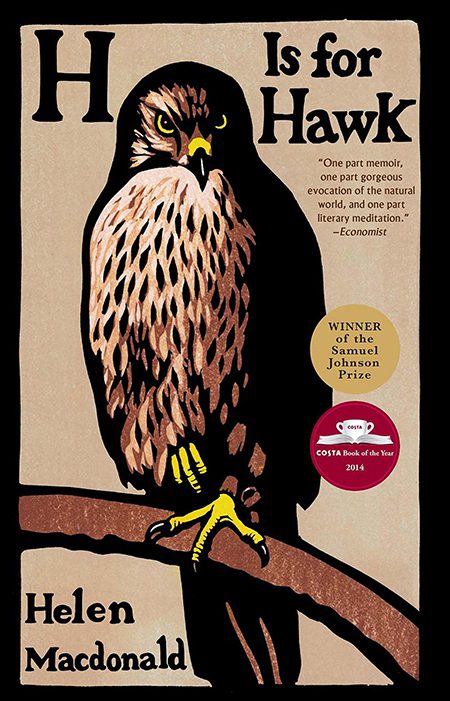Book Review: H Is For Hawk, by Helen Macdonald
Review by Stephen J. Bodio
From the Autumn 2014 issue of Living Bird magazine.
October 15, 2014
Helen Macdonald’s H is for Hawk is the best book on the goshawk yet, and may be the best on falconry from the inside. It is not only a bird book but a book about T. H. White’s 1951 classic, The Goshawk, which I once called “a book about excruciatingly bad falconry” but also added “the best book on falconry, its feel, its emotions, and its flavor, ever written.” H is for Hawk has better falconry, and ups the ante, weaving in another skein—her grief at the sudden death of her father. The three threads—T. H. White, training her goshawk, her grief— are beautifully, inextricably braided.
Helen is a competent falconer who has trained many birds, and has previously written a book about falcons. She is also a much-published poet, a critic, and a former lecturer in the history of science at Cambridge University. Unlike some wielders of critical theory, she knows the difference between real things and the meanings we invest in them; as she said in her earlier book: “Pigeons have no illusions that falcons are merely empty signifiers filled with meaning by humans.”
Her poet’s language and falconer’s knowledge fuse into prose that says things no one else has. Experimentally, I opened the book at random to see if I could find a quote, and got this: “The hawk left the fist with the recoil of a .303 rifle. I stepped out to watch. Saw a chain of events so fast they snapped into a comic strip: frame, frame, frame. Frame one: goshawk spluttering from the fist in bars and pinions and talons. Frame two: goshawk low to the ground, grass streaking along under her. Chocolate wings, beating strongly, hump-backed. Frame three: rabbits running. Frame four: The pheasant, too, crouching and running into the wood’s safe margin.”
Her pure description is as good. She calls Merlins “tiny falcons with needle talons and frames so voracious and delicate they resemble heated Meissen porcelain.” She is observant: “It is very strange watching a hawk chase a land animal in high wind. The hare has purchase; its claws and furry pads dig into leaves and mud, and it uses the ground to propel itself against. But the hawk moves in air alone. It is like watching one element against another. One world versus another, like a gannet diving into the sea for fish.”
She could have easily done mere description in poetic language. But she is also a good ethologist. Many people see goshawks simplistically as crazy; White was sometimes guilty of this, and so was I. Training her first goshawk, she recognized the bird’s playful side. “When I told Stuart I played catch with her for a while he didn’t believe me. You don’t play with goshawks…But I have had to, to somehow leaven the chill. Because other people with goshawks have people, too, for them their goshawks are their little splinter of wildness, their balance to domesticity; out in the woods with the hawk, other falconers get in touch with their solitudinous, bloody souls.”
Instead, she balks at a too-easy understanding. After the usual arguments (“If you choose to eat meat, I’ve said this is the best way to get it.”), she doesn’t reject them but tries to go beyond. “These arguments seemed petty now, and pointless… To be there, with a hawk and a caught rabbit that twitched and kicked and died. And the world’s biting into me. The serious, everything puzzle that was death and going away. I was accountable for these deaths. For the first time in my life I wasn’t a watcher anymore.”
The whole book could perhaps be summed up in this naturalist’s credo: “Of all the lessons I’ve learned in my months with Mabel this is the greatest of all: that there is a world of things out there: rocks and trees and stones and grass and all the things that crawl and run and fly. They are all things in themselves, but we make them sensible to us by giving them meanings that shore up our own views of the world. In my time with Mabel I’ve learned how you feel more human once you have known, even in your imagination, what it is like to be not.”
All About Birds
is a free resource
Available for everyone,
funded by donors like you
American Kestrel by Blair Dudeck / Macaulay Library




